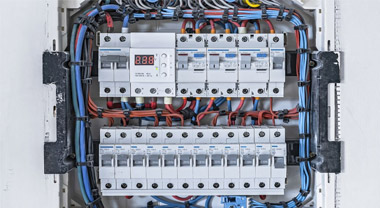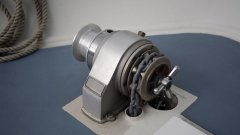How often should house breakers be replaced?
Ensuring the smooth operation of your home's electrical system involves several key components, one of which is the humble house breaker, also known as a circuit breaker. However, a question often asked by homeowners is: how often should these breakers be replaced? This article serves as a comprehensive guide to provide insight into the lifespan of house breakers, indicators for replacement, and the process involved, while emphasizing the importance of timely maintenance.
Table of Contents
- Introduction to House Breakers
- Understanding the Lifespan of House Breakers
- Indicators for House Breaker Replacement
- The Replacement Process
- Conclusion
Introduction to House Breakers
At the heart of any home's electrical system is the circuit breaker, a safety device designed to prevent electrical overloads and short circuits, which could potentially lead to fires. Each circuit in the home is protected by a breaker that is rated for the maximum amount of current that the circuit can safely handle.
When an overload or short circuit occurs, the breaker 'trips', interrupting the flow of electricity as a protective measure. After rectifying the issue causing the overload or short, the breaker can be reset to restore electricity to the circuit. Thus, the breaker serves as both a protector and a guide, alerting homeowners to issues within their electrical systems.
Understanding the Lifespan of House Breakers
Typically, circuit breakers are built to last. They are sturdy, reliable, and designed to withstand years of operation. Generally, the lifespan of a house breaker ranges from 25 to 40 years. However, just like any other device, its longevity is influenced by several factors such as the amount of use, the quality of installation, and environmental conditions.
Even though a circuit breaker may last for decades, that doesn't mean it will function optimally throughout its entire lifespan. Over time, components can wear out, connections can loosen, and the breaker can become less reliable. Therefore, regular inspections and preventative maintenance are crucial to ensure the breaker's effectiveness and longevity.
Indicators for House Breaker Replacement
Given their essential role in home safety, it's important to recognize the signs indicating that a house breaker may need replacement. Although these signs don't always mean that replacement is imminent, they are cause for concern and should be investigated by a professional. Here are a few common indicators:
- Frequent Tripping: A circuit breaker that trips frequently is a clear sign of a problem. While it's normal for a breaker to trip occasionally due to an overloaded circuit, constant tripping indicates a potential issue with the breaker itself.
- Unable to Reset: After a breaker has tripped, you should be able to reset it by moving the switch back to the 'on' position. If the breaker won't stay reset, this could signify that the breaker is faulty and needs replacement.
- Burn Marks or Burning Smell: If you notice burn marks around your breaker or a burning smell emanating from your electrical panel, this could be a sign of a serious issue that requires immediate attention.
- Physical Damage: Any physical damage such as cracks or breaks in the breaker can impede its function. If such damage is visible, it's time to replace your breaker.
The Replacement Process
Replacing a house breaker isn't a simple process, and it isn't typically a do-it-yourself task for most homeowners. The replacement process involves working directly with your home's electrical system, which if not handled correctly, can lead to serious injuries or even fatal accidents.
The first step in replacing a house breaker is determining the exact issue. An electrician will start by investigating the root cause of the frequent tripping or any other problem you might be experiencing. This involves checking the circuit for overloads and the breaker for any signs of damage.
Once the need for replacement is confirmed, the electrician will proceed to turn off the main power supply to ensure safety. The faulty breaker is then carefully removed from the panel, and a new one is installed in its place. Following this, the main power is turned back on, and the new breaker is tested to ensure it's working correctly.
This process should always be carried out by a licensed professional. Not only do they have the right training and tools, but they also know the local codes and regulations to ensure that the job is done safely and correctly.
Conclusion
House breakers, while small and often overlooked, play a vital role in maintaining the safety and efficiency of your home's electrical system. Understanding the lifespan of these devices and recognizing the signs for their replacement can help you maintain a safe living environment.
While the typical lifespan of house breakers is 25 to 40 years, this doesn't mean they won't need attention during that time. Regular inspections and maintenance by a professional electrician are key to their proper functioning. And when replacement becomes necessary, it's important to have the job done by a licensed professional to ensure safety and compliance with local codes.
In conclusion, stay aware, stay safe, and remember - your home's electrical system is no place for DIY when it comes to tasks like replacing a house breaker. Always seek professional help when needed.




